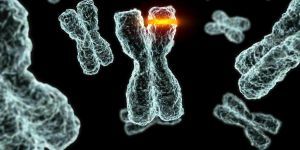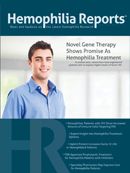Examining the Gout Pipeline
Although several medications and dietary factors have been implicated, as causes of gout, much of the risk of developing the condition is controlled through genetics, and the pathophysiology of the disease is incompletely understood.

Although several medications and dietary factors have been implicated, as causes of gout, much of the risk of developing the condition is controlled through genetics, and the pathophysiology of the disease is incompletely understood.1
In patients experiencing an acute flare of gout, joints will often become red and swollen, causing excruciating pain. Flares may occur unpredictably, with long periods of remissions interspersed with a bout of disease activity that may last from days to weeks. Although flares may respond to treatment, with continuing bouts gout may lead to degeneration of joints and long-term joint damage.1
In patients experiencing an acute flare of gout, joints will often become red and swollen, causing excruciating pain. Flares may occur unpredictably, with long periods of remissions interspersed with a bout of disease activity that may last from days to weeks. Although flares may respond to treatment, with continuing bouts gout may lead to degeneration of joints and long-term joint damage.1
High levels of uric acid in the bloodstream, or hyperuricemia, has been implicated as a risk factor in the pathophysiology of gout, but hyperuricemia is not identical to gout. In many patients, hyperuricemia may never cause symptoms. Nevertheless, current treatments for gout, including allopurinol, febuxostat, and probenecid, generally target the enzyme systems that metabolize uric acid. These medications may be used to help lower uric acid levels to prevent future flares of gout.1
In addition to preventive therapies for gout, several treatments focus on relieving acute pain and shortening the duration of a gout flare. These medications include nonsteroidal anti-inflammatory drugs (NSAIDs), steroids, and colchicine. Despite the availability of these medications, gout, which is the most common form of inflammatory arthritis, is a disease state that has undergone little innovation in recent decades, with only 2 new molecules for gout approved in the past 48 years (febuxostat and pegloticase).1-4
Fortunately, a new generation of agents are being developed to help reduce the pain of acute flares of gout and reduce the risk of developing flares over time. These medications target uric acid formation, as well as the inflammasome, the formation of the inflammatory mediator interleukin-1b, and the antiinflammatory melanocortin receptors on macrophages (Figure 1).1,5
Targeting Uric Acid
The armamentarium of uric acid-lowering therapies, or ULTs, is likely to grow with the development of treatments like lesinurad, arhalofenate, ulodesine, and levotofisopam.5
Scientists working for Ardea Biosciences first discovered lenusirad while developing a non-nucleoside reverse transcriptase inhibitor. One lead compound was found to have urate-lowering effects due to its effects on renal transporters URAT-1 and OAT4. In a 12-patient study over 14 days, all patients treated with febuxostat 40 mg for 7 days followed by combination treatment with lenisurad 600 mg for 7 days experienced reductions in urate levels to levels <4 mg/dL, down from baseline levels >6 mg/dL. Some patients achieved urate levels <2 mg/dL.5,6
Researchers with BioCryst Pharmaceuticals are developing ulodesine, a purine nucleoside phosphorylase inhibitor. Ulodesine blocks production of uric acid before it forms, rather than inactivating it after it forms, as the xanthine oxidase inhibitors do. Doses of ulodesine have been associated with reductions in levels of CD41, CD81, and CD201 lymphocytes.5
Scientists at Velos Pharmaceuticals, which is now owned by Pharmos, began developing levotofisopam as an antianxiety benzodiazepine-type medication in 2006. In early trials, levotofisopam was found to have urate-lowering effects. Phase II studies of levotofisopam for this property showed efficacy in 13 patients with gout who experienced a nearly 50% reduction in urate levels over 7 days with 50 mg of levotofisopam taken 3 times daily over the course of the trial.5
Investigators at Cymabay Therapeutics are developing arhalofenate, an anti-inflammatory PPARgamma modulator drug that was initially intended as a treatment for diabetes. When Cymabay scientists identified the compound’s urate-reducing properties, including inhibition of the renal transporters URAT- 1, OAT4, and OAT10, the drug was tested on murine macrophages and was found to reduce the formation of urate crystals and RNA markers for formation of the proinflammatory mediator interleukin-1b. Early trials in humans indicate reductions in urate levels of roughly 20% to 40%.5,7
Targeting Inflammation
One key mediator in the inflammatory cascade of gout, the NLRP3-inflammasome, may be targeted using the interleukin-1 receptor antagonist anakinra, the IL-1b monoclonal antibody canakinumab, and the IL-1 fusion protein rilonacept. Trials with these agents are ongoing.5,8-11
Agents that target the melanocortin receptor include melanocortins, caspase inhibitors, and corticotropins. 5 Clinical response in a 181-patient study with corticotropin was noted within 1 day in more than two-thirds (70%) of patients.12 Trials have yet to be conducted with melanocortin and caspase inhibitors, but scientists are hopeful that these medications will also reduce inflammation.5
Summary
Although the pace of development in gout therapies has been slow, with only 2 new therapies developed in nearly 50 years, companies are beginning to take notice of this painful, all-too-common disease state.1-5 With new agents targeting uric acid formation and inflammatory mediators, relief may be in sight for millions of Americans with gout.
References:
1. Centers for Disease Control and Prevention. Gout. http://www .cdc.gov/arthritis/basics/gout.htm. Accessed July 8, 2014. 2. US Food and Drug Administration. Zyloprim label history. http://www.accessdata.fda.gov/scripts/cder/drugsatfda/. Accessed July 8, 2014.
3. US Food and Drug Administration. Krystexxa label history. http://www.accessdata.fda.gov/scripts/cder/drugsatfda/. Accessed July 8, 2014.
4. US Food and Drug Administration. Uloric label history. http:// www.accessdata.fda.gov/scripts/cder/drugsatfda/. Accessed July 8, 2014.
5. Edwards NL, So A. Emerging therapies for gout. Rheum Dis Clin North Am. 2014;40(2):375-387. 6. Fleischmann R, Kerr B, Yeh LT, et al. Pharmacodynamic, pharmacokinetic and tolerability evaluation of concomitant administration of lesinurad and febuxostat in gout patients with hyperuricaemia [published online February 8, 2014]. Rheumatology (Oxford).
7. Gregoire FM, Zhang F, Clarke HJ, et al. MBX-102/JNJ39659100, a novel peroxisome proliferator-activated receptor-ligand with weak transactivation activity retains antidiabetic properties in the absence of weight gain and edema. Mol Endocrinol. 2009;23(7):975-988.
8. Martinon F, Pétrilli V, Mayor A, Tardivel A, Tschopp J. Goutassociated uric acid crystals activate the NALP3 inflammasome. Nature. 2006;440(7081):237-241.
9. Schumacher HR Jr, Evans RR, Saag KG, et al. Rilonacept (interleukin- 1 trap) for prevention of gout flares during initiation of uric acid-lowering therapy: results from a phase III randomized, double-blind, placebo-controlled, confirmatory efficacy study. Arthritis Care Res (Hoboken). 2012;64(10):1462-1470.
10. So A, De Meulemeester M, Pikhlak A, et al. Canakinumab for the treatment of acute flares in difficult-to-treat gouty arthritis: results of a multicenter, phase II, dose-ranging study. Arthritis Rheum. 2010;62(10):3064-3076.
11. Schlesinger N, De Meulemeester M, Pikhlak A, et al. Canakinumab relieves symptoms of acute flares and improves health-related quality of life in patients with difficult-to-treat gouty arthritis by suppressing inflammation: results of a randomized, dose-ranging study. Arthritis Res Ther. 2011;13(2):R53.
12. Daoussis D, Antonopoulos I, Yiannopoulos G, Andonopoulos AP. ACTH as first line treatment for acute gout in 181 hospitalized patients. Joint Bone Spine. 2013;80(3):291-294.
